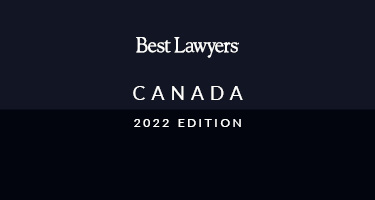In November of this year, the Supreme Court of Canada will consider the “utility” requirement in the Canadian Patent Act in a case involving the drug NEXIUM.1 This will be the Court’s first chance to do so since the AZT decision in 2002,2 which resulted in a wave of patent utility challenges.
THE AZT DECISION
In 2002, the Supreme Court of Canada upheld patent claims for the new use of the drug AZT in the treatment of HIV. In reaching this conclusion, the Court found that the claimed new use had to be demonstrated or soundly predicted as of the patent application date. Thus, mere post-filing proof of utility would be insufficient. Now utility challenges are not based on any actual inutility, but on insufficient proof of utility as of filing.
POST-AZT: THE PROMISE DOCTRINE AND PROPER DISCLOSURE
Since AZT, the lower courts have further developed the law, resulting in the evolution of the “promise doctrine” and the creation of a heightened disclosure requirement for sound prediction.
Under the “promise doctrine,” a patent is construed with the assistance of expert evidence to determine the promised utility of a claimed invention. This often involves a careful parsing of the patent to determine if there is “an explicit promise of a specific result”3 that is “clear and unambiguous.”4 The focus is not necessarily on the invention claimed (e.g., a new chemical entity), but is often on statements in the description relating to uses of the claimed invention (e.g., therapeutic uses in humans). If there is no promise, then a “mere scintilla of utility” will suffice.5
If there is a promise, then a demonstration or sound prediction will need to be established, and while a patentee may be able to rely on pre- iling undisclosed data to establish that the utility was actually demonstrated prior to filing, such has not been the case for sound prediction.
According to AZT, there must be a factual basis for a sound prediction—an articulable and “sound” line of reasoning from which the desired result can be inferred from the factual basis—and proper disclosure. The Federal Court of Appeal has interpreted “proper disclosure” to mean that the factual basis and sound line of reasoning must be in the patent.
In NEXIUM, the Supreme Court of Canada will have the opportunity to comment on both of these evolutions in the law post-AZT.
NEXIUM
The NEXIUM patent claims, inter alia, optically pure esomeprazole magnesium (NEXIUM™). NEXIUM reduces gastric acid and is approved for the treatment of various gastric acid-related disorders.
The Federal Court found the relevant claims novel and non-obvious, but invalid for failure to demonstrate or soundly predict a promised utility. The Federal Court of Appeal affirmed. The Federal Court found that the patent included a promise of “an improved therapeutic profile.” This “promise” was based on a single statement in the patent and was not relevant to the findings of novelty and non-obviousness. The Court found that, at the filing date, it was soundly predicted that the claimed compound would be useful as a therapeutic compound, but there was no demonstration or sound prediction of an improved therapeutic profile. In reaching this conclusion, the Court also considered the disclosure requirement for sound prediction to apply only to use patents (as in AZT), such that the patentee could have relied on pre-filing undisclosed data.
The promise doctrine will therefore be a central issue in NEXIUM, and, given the findings by the Federal Court, the Supreme Court of Canada may also dispose of the heightened disclosure requirement for sound prediction.
Although an important issue, the Canadian government has not been receptive to a legislative solution, despite a challenge under the North America Free Trade Agreement8 and annual inclusion on the “Special 301” Watch List9 since 2013 due to the “heightened utility requirements.” NEXIUM may therefore be the best opportunity to realign Canadian law with other jurisdictions.
---------------------------------------------------
1 AstraZeneca v. Apotex SCC # 36654; appeal of 2015 FCA 158 (the “NEXIUM” decision)
2 Apotex v. Wellcome 2002 SCC 77 (the “AZT” decision)
3 Sanofi-Aventis v. Apotex 2013 FCA 186
4 Apotex v. Pfizer Canada Inc. 2014 FCA 250
5 Sanofi-Aventis supra note 3
6 Teva v. Pfizer 2012 SCC 60 (the “VIAGRA” decision)
7 Eli Lilly v. Apotex, 2009 FCA 97; Eli Lilly v Novopharm2010 FCA 197
8 Eli Lilly v. The Government of Canada, UNCITRAL, ICSID Case No. UNCT/14/2, pending
9 Office of the United States Trade Representative, https://ustr.gov/issue-areas/intellectual-property/Special-301#































